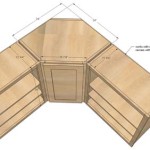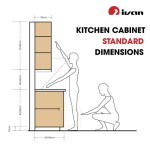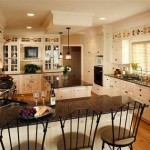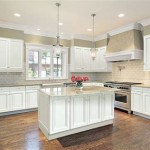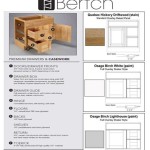Changing Kitchen Cabinets: Essential Aspects to Consider
Upgrading kitchen cabinets can dramatically transform the aesthetics and functionality of your kitchen. However, before embarking on this project, it's crucial to consider several essential aspects to ensure a successful outcome.
1. Cabinet Layout
The layout of your kitchen cabinets plays a significant role in optimizing storage space and kitchen workflow. Determine the ideal cabinet positions for your appliances, cookware, and other items. Consider incorporating a mix of drawers, shelves, and specialty storage solutions to maximize functionality.
2. Cabinet Style
The style of your kitchen cabinets should complement the overall design of your home. Explore various options, such as traditional, modern, or transitional styles, to find one that aligns with your preferences. Consider the size and shape of your kitchen to ensure a harmonious fit.
3. Cabinet Materials
Kitchen cabinets are available in a wide range of materials, including wood, laminate, and acrylic. Each material offers unique advantages and drawbacks. Wood is durable and elegant, but it requires more maintenance. Laminate is affordable and easy to clean, while acrylic is modern and scratch-resistant.
4. Cabinet Doors and Handles
Cabinet doors and handles can enhance the overall look of your kitchen. Choose doors with the desired finish and style to complement your cabinet materials. Similarly, select handles that are functional and aesthetically pleasing, ensuring they are comfortable to use while adding a touch of style.
5. Hardware and Accessories
The right hardware and accessories can improve the functionality and organization of your kitchen. Consider incorporating soft-close hinges for a quieter operation, roll-out drawers for easy access to deep storage, and pull-out shelves to maximize space utilization.
6. Lighting
Proper lighting is essential in a functional kitchen. Include under-cabinet lighting to illuminate work surfaces and inside cabinets. Consider adding a combination of ambient, task, and accent lighting to create a well-lit and welcoming space.
7. Budget
Kitchen cabinet replacement can be a significant investment. Determine your budget before starting the project and be prepared for additional costs associated with materials, labor, and hardware. Consider exploring financing options if needed.
8. Professional Installation
While it's possible to install kitchen cabinets yourself, it's highly recommended to hire a qualified professional. Proper installation ensures proper alignment, functionality, and longevity of your new cabinets.
9. Maintenance
Once your new kitchen cabinets are installed, regular maintenance is crucial to keep them looking and functioning their best. Wipe down surfaces regularly, clean hardware, and avoid overloading cabinets to prevent damage.
By considering these essential aspects, you can ensure a successful kitchen cabinet replacement project that enhances the aesthetics, functionality, and overall value of your home.

Best Kitchen Cabinet Refacing For Your Home The Depot

Reface Or Replace Your Kitchen Units Dream Doors

Reface Or Replace Your Kitchen Units Dream Doors

How To Paint Kitchen Cabinets In 7 Simple Steps

How Often Do You Need To Replace Kitchen Cabinets

How Can I Change The Look Of My Kitchen Cabinet Doors Now

Average Cost To Replace Cabinets Forbes Home

21 Diy Affordable Ways To Redo Kitchen Cabinets Extra Space Storage

How Much Does It Cost To Replace Kitchen Cabinets Shelfgenie

5 Benefits Of Replacing Kitchen Cabinets N Hance Ontario
Related Posts

